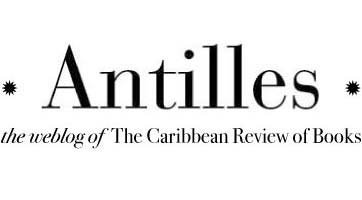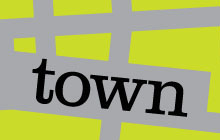Garnette Cadogan's bedside books
Friday again, dear readers--"bedside books" day. Here's a list compiled by Garnette Cadogan, who last reviewed a slew of recent Bob Marley books in the February 2007 CRB. From the size of his bedside book stacks, it's clear Garnette must get very little sleep.
Some throat-clearing before I submit my list of “bedside books.” The piles--very rarely straightened into stacks--of books I’m reading are everywhere but by my bedside. Strangely enough, I even share bed space with a pile or two, since my eyelids usually close before some page in the wee hours.
I read thematically, forming piles around current and enduring interests. A mix of books, magazines, newspapers, and, less so, blogs gather around the themes I explore. But as reading material congregate, serendipity derails me and delays the piles’ thinning. An interesting article here, a must-read book there, and, before I notice it, new piles pop up everywhere.
My piles are a mix of gifts, books sent by publishers to be reviewed, books lent by friends and acquaintances who assure me “you will love this,” and books bought everywhere from bookstores to sidewalk vendors. These are the small piles, usually five to ten subjects deep. The magazine piles, however, are hazardous, assaulting every free space as they transform airy rooms into labyrinths. What’s worse, many of these piles travel with me, since I can think of few better ways to enjoy subway rides, airplane holdups, doctors’ visits, and casual walks down the street than with my face buried in the written word.
And I haven’t even mentioned the books in my library, properly organised and in constant competition with the burgeoning piles.
Half the joy of reading is the possibility of re-reading, and a considerable amount of my current reads are renewals of nuptials rather than first dates. First meeting or ongoing familiarisation, I read because of the promise of discovery. Here, then, are some companions that satisfy my curiosity and deepen my empathy.
After a botched surgery last year (no thanks Bellevue Hospital, NYC) that finally was repaired a few weeks ago (all hail the marvelous Hospital for Special Surgery, NYC), I decided to delve into the world of medical writing, exploring the uncertainties, complexities, challenges, and triumphs of modern medicine. The plunge has been great, not least because of the graceful writing found in the following:
- How Doctors Think, by Jerome Groopman. A practical, humane, and eloquent treatise from a physician at Harvard Medical School who writes for the New Yorker. I may just buy it in bulk and deliver it to the orthopedic department of Bellevue Hospital.
- Better, by Atul Gawande. Like Groopman, Gawande does the rounds at Harvard Medical School and the New Yorker. His collection of essays is no less eloquent than, though not as organic as, Groopman’s thoughtful discussion of medical decision-making. No matter: a stimulating collection, nonetheless, that highlights how simple and ingenious practices improves medical care. You’ll never think of hand-washing the same way again.
- Final Exam: A Surgeon’s Reflection on Mortality, by Pauline Chen. I first came across this surgeon in the splendid Virginia Quarterly Review, and her thoughtful, moving writing guaranteed that I’d pick up this book. Her tender reflections on end-of-life care, not to mention her honest discussion of dealing with people who have no choice but to view life from the vantage point of the end, is an illuminating meditation on the relationship between medicine and mortality. Chen’s book is a vivid reminder of the necessity of compassion in our technology-driven age.
- I’m also reading Gawande’s recent New Yorker article, “The Way We Age Now” (April 30), and Chen’s “The Gross-Out Factor” in the Virginia Quarterly Review (Spring). Someone should convince Chen to eventually compile her articles between two covers (there’s not enough yet, but not for long, I hope).
I’ve lost count of the number of books I’ve read on writing. Just as well: most of them are a waste of time. A recent crop of books, though, have made me pause, even smile. Who would have guessed? A series of excellent books on writing published within months of each other.
- Telling True Stories, by Mark Kramer and Wendy Call. By far the best of the lot, this is about writing and so much more: thinking, organising, reporting, and, above all else, the joy of a good story. A collection of ninety-one brief yet potent essays by well-known authors (Gay Talese, Susan Orlean, David Halberstam, Tom Wolfe, Adam Hochschild, Malcolm Gladwell) and lesser-known writers who certainly should be household names, this book is indispensable to anyone who loves nonfiction. This gem discusses everything from how to reasonably deepen research methods, develop writing style, and sharpen editorial skills to why one should anchor reporting and writing practices in ethics, build a career in magazines and books, and strengthen reportorial skills. This book will certainly improve the quality of the writing life like no other. Whether you want to find an agent, polish your prose, or give up your day job to become a writer (or keep your day job while freelancing) then you can do no better than this book. Did I remember to say the bibliography alone is worth the price of admission?
- Writing Tools, by Roy Peter Clark; A Writer’s Coach, by Jack Hart. Clark and Hart’s books should be squeezed into your bookshelf alongside Strunk and White’s pithy volume. Both journalists, they offer sensible, clear advice on writing well, with a compendium of examples from fine writers. And to boot, they do it with wit (especially Clark, who is sometimes a hoot). These books can be--should be--used by beginners, but they definitely are written for people hungry for instruction from a writer’s writer. Think of Hart’s book as a commentary, which nurtures the writer from idea to final draft, and Clark’s, with its fifty incisive, practical tools, as a devotional. You need both, but you approach them differently. The result will be the same, though: sharper thinking and more sparkling prose.
- The Paris Review Interviews, vol. 1, by Philip Gourevitch. Not really a book on writing, but why argue with the writer’s superstition that one can improve one’s prose through osmosis. Ahh, the delight of hearing masters talk about their work. A wonderful collection of interviews that can be read to learn about the craft (of writing, editing, filmmaking), I like this book even more for the pleasure of eavesdropping on thought-provoking, good-humored conversations. No wonder I was spurred to reach again for The New New Journalism, by Robert S. Boynton, the best collection of interviews of reporters and writers you’ll ever read. I’m willing to bet on it.
Alas, only two piles and already the reading seems endless. Here are some other piles:
On 9/11:
- American Ground: Unbuilding the World Trade Center, by William Langewiesche
- The Looming Tower: Al-Qaeda and the Road to 9/11, by Lawrence Wright
- The Emperor’s Children, by Claire Messud
+ assorted magazine articles
On Iraq:
- The Assassin’s Gate, by George Packer
- Fiasco: The American Military Adventure in Iraq, by Thomas E. Ricks
+ skyscraper-high magazine articles
On journalism:
- The Race Beat: The Press, the Civil Rights Struggle, and the Awakening of a Nation, by Gene Roberts and Hank Klibanoff
- Reporting: Writings From the New Yorker, by David Remnick
- A Writer’s Life, Gay Talese
- Public Editor #1: The Collected Columns (with Reflections, Reconsiderations, and Even a Few Retractions) of the First Ombudsman of The New York Times, by Daniel Okrent
- Letters to a Young Journalist, by Samuel Freedman
+ Michael Shapiro’s (2002) Columbia Journalism Review article, “The Curse of Tom Wolfe” + Ken Auletta’s recent New Yorker article on WSJ technology journalist Walter Mossberg
On Bob Marley:
Just about everything written on him. More like a pair of towers than two piles.
On Naipaul:
His nonfiction books, for a forthcoming piece in The Caribbean Review of Books. Naipaul’s radiant prose and precise, lucid observations suggest we ought to be making more of a fuss over his nonfiction. I’ve found his nonfiction more lyrical than his later fiction for some time now, and can’t help but wonder why it does not enjoy more popularity in the Caribbean. Too much of his fiction, for me, seems like more of the same (less of the same, really). Surely it’s time for us to turn more frequently to his “literature of fact,” even if he’s the Caribbean’s curmudgeon par excellence.
On Peanuts:
- The Complete Peanuts, 1950-1952, 1953-1954, 1955-1956, 1957-1958, 1959-1960, 1961-1962. This collection should be in every child and adult’s library. The comical, poignant world of Charlie Brown and pals--sans adults--is one of the marvelous gifts of the twentieth century. Charles Schulz offered us this world for a half-century (1950-2000) and Fantagraphics Books’ ongoing high-quality reproduction has, so far, given us Schulz’s first dozen years. This complete reprinting will be done in 2016 and I plan to own every volume (if I’m still around). Peanuts’ hilarity, wisdom, and visual expressiveness made Charlie Brown’s world our universe. “The world of Peanuts is a microcosm,” said Umberto Eco, “a little human comedy for the innocent reader and for the sophisticated.”
Poetry:
- Halflife: Poems, by Meghan O’Rourke
- Selected Poems, by Derek Walcott
- District and Circle: Poems, by Seamus Heaney
Favorite authors:
- The Atomic Bazaar: The Rise of the Nuclear Poor, by William Langewiesche. A pile of one. Yes, he’s that good. Graceful. Economical. Measured. Peerless.
Manuscripts:
- Ned Sublette’s The World That Made New Orleans: From Spanish Silver to Congo Square (forthcoming from Lawrence Hill Books, 2008)
- Shirley Thompson’s as-yet-untitled book on Creole New Orleans in the American Imagination (forthcoming from Harvard University Press, 2008)
- Jason Toynbee’s Bob Marley: Herald of a Postcolonial World (forthcoming this October from Polity, Cambridge, UK)
+ reams of friends’ soon-to-be-published articles and books
Fiction:
Too much overflowing, and too much half-read. This pile induces guilt. (On top is Rebecca Scott’s Ghostwalk, which is off to a very good start. Right below is Saul Bellow’s Collected Stories, a constant subway complement.)
New Orleans:
Everlasting high-rises.
And then there are the magazines and literary journals....
.
Dear readers: For our sixth anniversary in May 2010, The Caribbean Review of Books has launched a new website at www.caribbeanreviewofbooks.com. Antilles has now moved to www.caribbeanreviewofbooks.com/antilles — please update your bookmarks and RSS feed. If you link to Antilles from your own blog or website, please update that too!
Dear readers: For our sixth anniversary in May 2010, The Caribbean Review of Books has launched a new website at www.caribbeanreviewofbooks.com. Antilles has now moved to www.caribbeanreviewofbooks.com/antilles — please update your bookmarks and RSS feed. If you link to Antilles from your own blog or website, please update that too!
Friday, 25 May 2007
Subscribe to:
Post Comments (Atom)








1 comment:
Someone should convince Chen to eventually compile her articles between two covers (there’s not enough yet, but not for long, I hope).
I may be remembering incorrectly, but when we had her here in Charlottesville for a reading, I believe she told the audience that she is working on a collection of essays.
Post a Comment